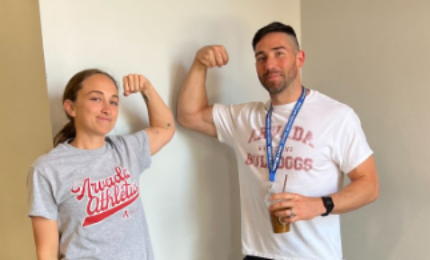Not If, but When?
Teachers adapt to new pandemic conditions.
November 20, 2020
The uncertainties and challenges teachers have faced throughout the fall semester has shifted the focus of what it means to teach during a pandemic.
A major concern for teachers who taught in-person on the hybrid schedule was safety.
“As more kids get sent home, you start to wonder when is it my turn?” social studies Nicholas Floerchinger said. “It’s like playing Russian roulette. It’s not if I am gonna get it, but when am i going to get it.”
The infection rate in Jeffco is so high that some are worrying more about how long they can avoid getting sick instead of how to stay healthy. This fear can cause the hoarding of cleaning products, toilet paper and medicine.
Teachers are trying to avert this fear by restoring some semblance of normalcy. Even with having to rapidly adjust to new technology. This technology is forcing new expectations on students.
“I’m using technology more than I expected to be,” math teacher Elizabeth Kantner said. “I have to be very clear with what the expectations are, and students have to be in the Zoom call. Otherwise, I don’t know if they get it.”
Kantner and other fellow teachers believe that all the adaptations, including a heavier reliance on technology, are changing the way teachers and students navigate school.
“Kids struggle to interact as well as they do when they are just in class together,” science teacher Daniel Varda said. “I find [that] when everyone’s in class together, the interactions are quite a bit greater.”
A commonly repeated phrase, alluding to the school’s mission statement, is that students are truly having to be “leaders of their own learning,” while teachers play a more supportive role in the learning process.



